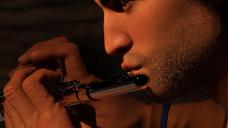Why is the flute emitting metal sparkles?
 RexRed
Posts: 1,323
RexRed
Posts: 1,323
I'm not sure why the flute is radiating sparkles...
Is there a shader setting that is making this happen?



Flute Sparkles.jpg
1618 x 910 - 886K
Post edited by RexRed on


Comments
Those hot pixels are just what happens when you have a highly shiny surface in an enclosed room.
Try adjusting the flute's glossy settings.
Thanks a lot Margrave for the helpful tip!
Those are firelflies. You need to render longer or add more ambient light.
Alternatively, this is something the Photoshop denoiser can deal with quite well.
Noise from a lack of ambient light tends to be darker. White pixels are usually caused by too much specularity and/or emissive surfaces.
Since there've already been actualy useful suggetions, isn't the most obvious thing remaining to consider that it is a magic flute?
Granted, it will make the render take longer, but has anyone ever tried rendering this kind of stuff with caustics ON? If so, does it help at all?
Do you mean the Caustic Sampler?
Caustics refers to glass and other transparent material, not just anything that's shiny. Also, the Iray documentation states the Caustic Sampler is only useful for close-up, turntable-style renders of glass or liquid objects. Anything else, and it's effectively useless.
There are a few things I try for this.
Lower the lumen in the light and use Tone Mapping instead.
Change the colour of the light to a warmer colour 4500 to 6500
Change the Firefly/Nominal Luminance to a low number, I use 100 sometimes but it isn't always necessary to go that low my default is 1500
Lower the Glossiness settings on everything.
Sometimes one or a combination of these eventually gets rid of them. I find I use the Firefly Filter the most.
Yes, I think that might be it in the Render tab under the Optimization settings. I've never tried using it myself, but from what I understand it is also suppose to make certain reflection effects more realistic in regards to very shiny metals that are close to a surface that has any kind of reflectivity. Notice in the OP's render there's next to no effect on the skin where that very shiny metallic flute is in close proximity to it. Granted, there doesn't appear to be a whole lot of light in the scene, but I would expect there to be some kind of reflected highlights on the hands & face somewhere that are stronger or more concentrated than the light source(s) hitting them since the metallic flute has no roughness & is highly reflective(i.e. the light is much less scattered & more focused, so to speak).
Yes, caustic also deals with the possible paths of a light beam, accounting for the refraction and reflection.
There are reflected highlights on the hands: the hot pixels. They're just so bright they're clipping past 1.0 and turning into overblown white dots. And due to the nature of path tracing, there aren't enough rays to spread the effect out.
As to the caustic sampler:
-https://raytracing-docs.nvidia.com/iray/manual/index.html#iray_photoreal_render_mode#caustic-sampler